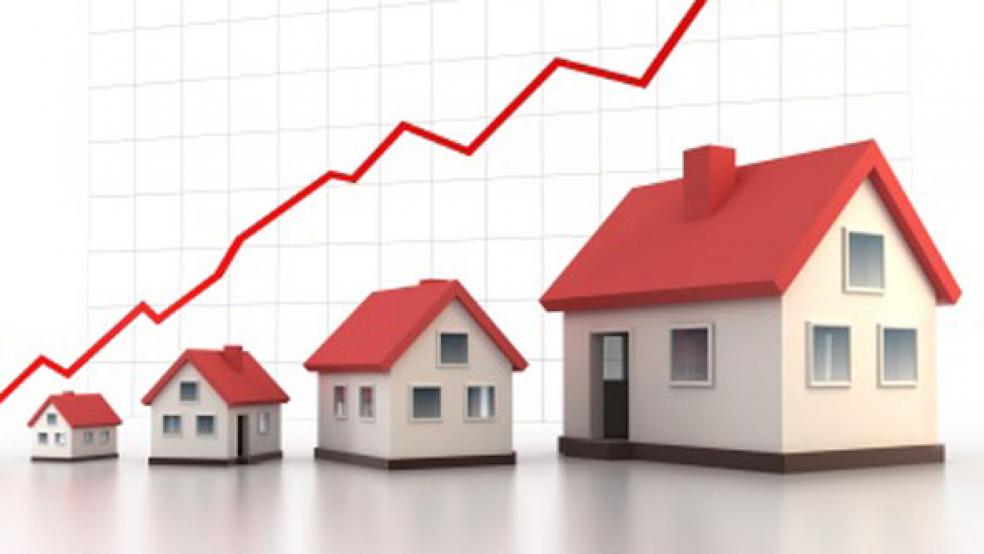Philip Mandel would be in a very tight spot if it weren’t for his home equity line of credit (HELOC). “My income is down these days, so I draw almost monthly from the HELOC to pay my bills,” says Mandel of the type of loan that allows borrowing against a home’s value.
Mandel, a certified health coach in Beaverton, Ore., took out a HELOC for $50,000 in November of 2012 and qualified for an increase in the credit limit to $94,000 in February this year. “My house value shot up and my prior year’s tax return made the bank very happy,” says Mandel, who has turned to this borrowing method many times over the last 20 years to pay down credit card debt, invest in real estate, and even buy a concert grand piano.
Related: OMG, a Foreclosure on the Swankiest Road in the Hamptons!
“To borrow nearly $50,000 on credit cards would require maxing out several of the cards,” he says. “Imagine all the interest down the drain that wouldn’t be tax deductible, as HELOCs can be, and how bad that would look to credit scoring agencies.”
Popular in the early 2000s and often cited as a main cause of the subprime mortgage crisis, HELOCs are in vogue once again as home values are on the rise and interest rates remain low. This loan allows you to regularly draw on a credit line by paying interest rates only for the first 10 years – at which point you start repaying the principal in addition to interest, typically for the next 15 years.
About $13 billion of new HELOCs and home-equity loans were issued in the first quarter of this year, up 8 percent from a year earlier and the most for that time frame since 2009, according to Inside Mortgage Finance.
“HELOCs are an alternative for consumers to tap into the equity of their homes and gain access to cash if or when they need it,” says Doug Lebda, CEO of Lending Tree, an online lender. “For those with a good credit profile, rates are lower than with other forms of lending, whether that’s personal loans, auto loans or credit cards.
Some people also use HELOCs to repay student loans or for one-time large expenses. “Our clients were able to secure $50,000 HELOCs at interest rates below 4 percent,” says Matt Rinkey, president of Illumination Wealth Management. They took the proceeds and paid off student loans, which carried interest rates of more than 6 percent, saving $1,400 per year in interest.
Amy Ellis, vice president at Private Bank of Buckhead in Atlanta, tells of an empty-nester couple who moved out of their big house and downsized to a condo. “They needed cash to sell and cash to close on their new property and did not want to have to liquidate their retirement funds and pay a penalty,” she says. The couple owned a second home at a lake resort – and took a HELOC on that property.
An Insurance Policy – with Big Caveats
HELOCs can be a great tool in financial planning – but can also lead to trouble. In the early 2000s, people could borrow up to 100 percent of their home’s value, but many homeowners became over-extended when the value of their homes began plummeting.
“This is not an ideal product for someone who lacks self-control,” says Bijan Golkar, a certified financial planner with FPC Investment Advisory. “Think of it more as an insurance policy.”
Related: As Prices Stabilize, Home Buyers Have an Incentive to Buy
Some actually see trouble on the horizon because of the way HELOCs work. When they reset to fixed-amount loans after 10 years, they become fully amortized 15-year loans – and the payment amount goes up substantially, catching many borrowers off guard. For example, a $100,000 HELOC at 4 percent would cost $333.33 in interest; but once that loan hits the 10-year mark, the payment high-jumps to $739.69 per month.
“This could crush a household’s budget,” says Golkar. “If they can’t make the new payment, people are forced to refinance or even sell their home.”
Jeffrey Taylor, co-founder and managing partner at Digital Risk, notes that according to Equifax, when a reset occurs, the serious delinquency rate – when the loan is 90 days or more past due and nears default – jumps from 3 percent before reset to 5.6 percent afterward. “That is a big deal and makes bankers worry,” says Taylor.
In fact, Wells Fargo recently announced it is cutting back on its interest-only HELOCs and now only offers HELOCs to customers with at least $1 million in savings and other liquid assets, citing concerns that some borrowers may have difficulties repaying their loans.
These are more sober times, which should help lenders and consumers alike. We’re still far from the peak of the $113 billion worth of HELOCs that were issued during the third quarter of 2006, according to The Wall Street Journal.
Today, HELOCs are usually offered “to good-to-excellent credit quality borrowers with deeper equity positions, and lenders require full documentation and appraisals,” says Keith Gumbinger, vice president of HSH.com, a mortgage information provider. “Lenders will also not allow borrowers to leverage much past 80 to 85 percent of the value of their home.”
Top Reads from The Fiscal Times:




